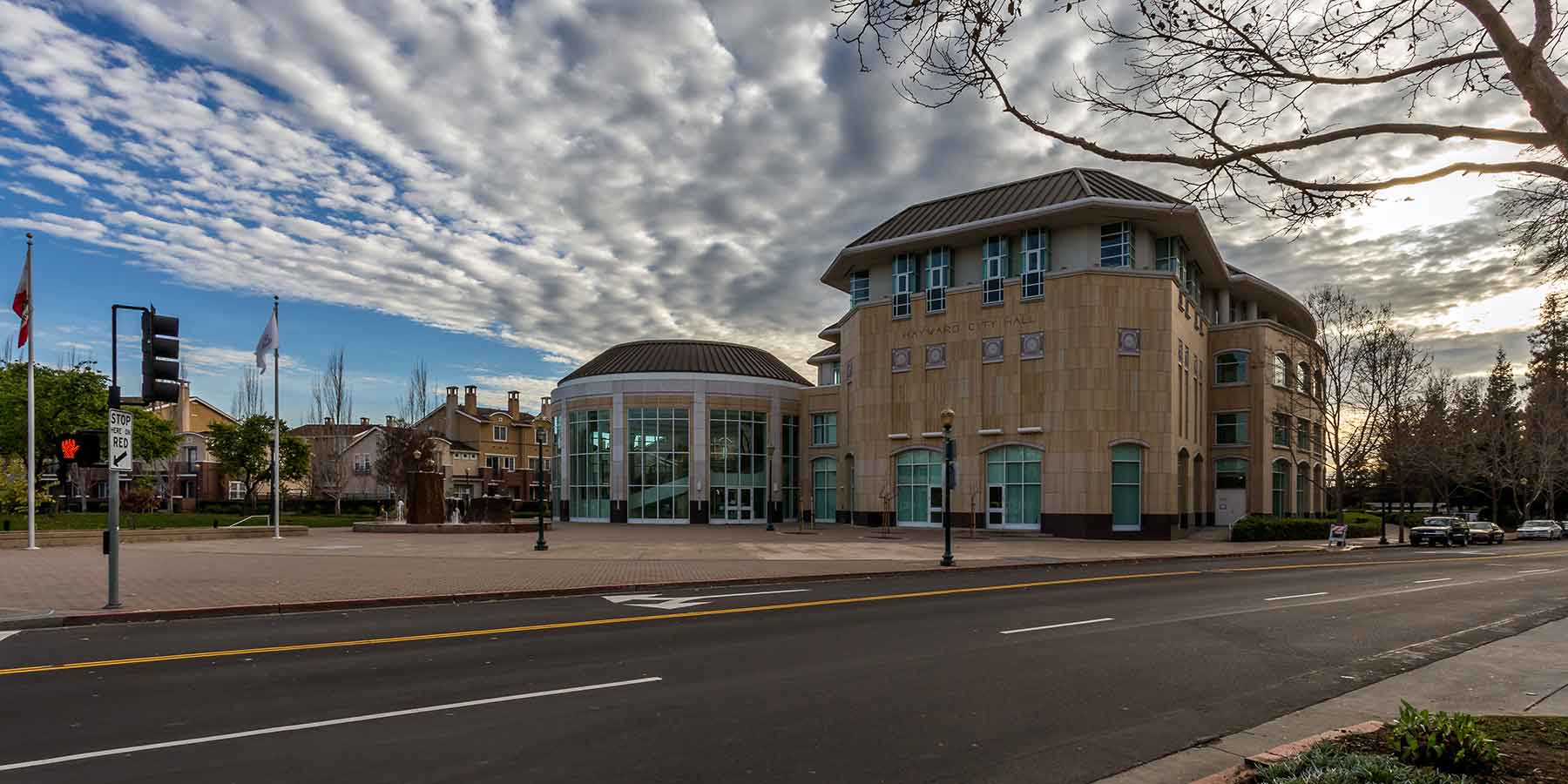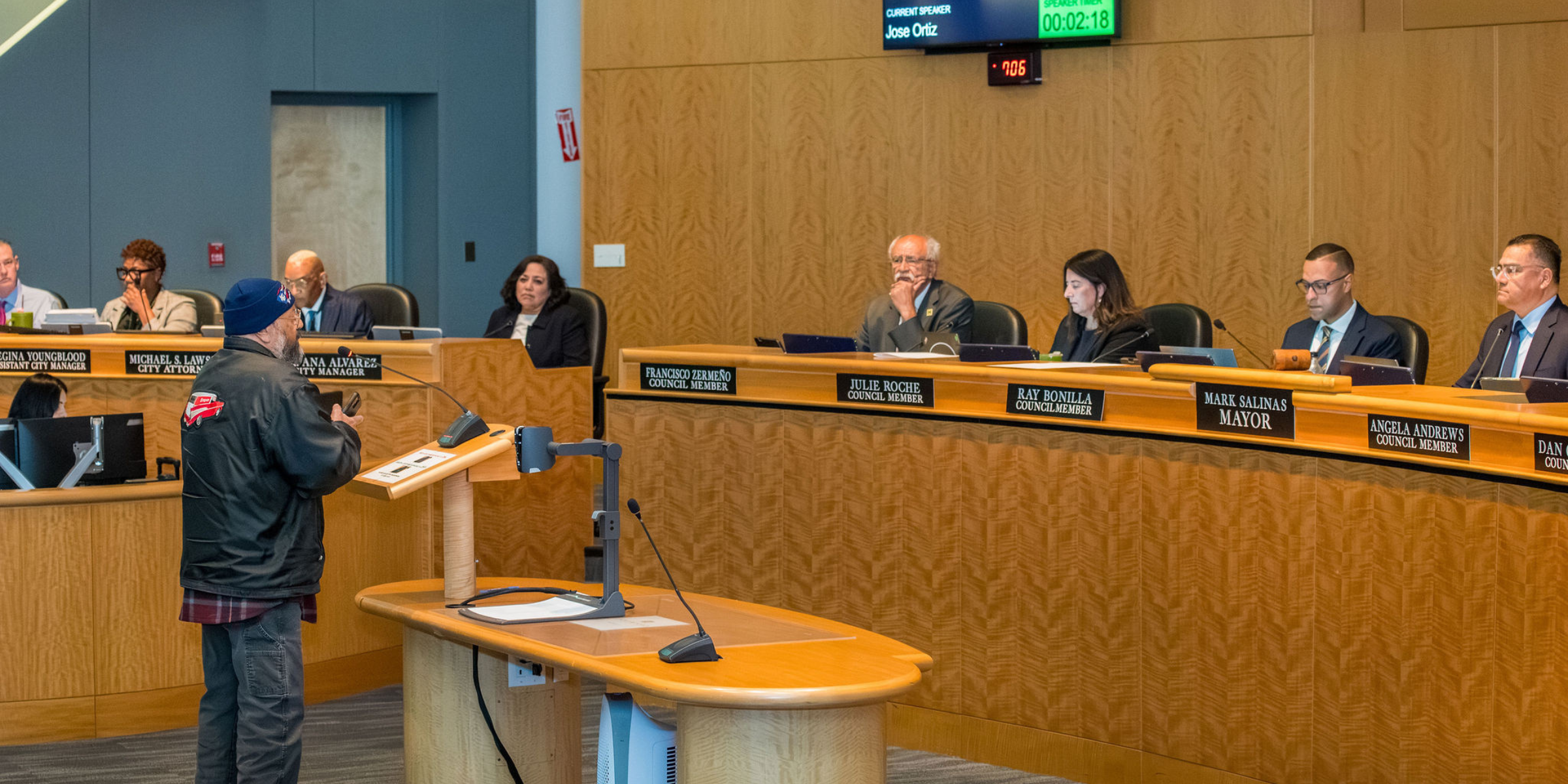Building Energy Sector Measures
CAP measures for the building energy sector focus on transiting to renewable energy sources, carbon-free electricity, and building electrification. When all-electric buildings are powered by carbon-free electricity, their operating energy footprint becomes carbon-free.
Renewable Energy and Carbon-Free Electricity
Hayward’s building energy (BE) measures are dependent on leveraging the renewable energy that Ava Community Energy provides the community. Using 100 percent carbon-free electricity from Ava Community Energy, instead of natural gas, propane, or other non-renewable electricity sources, to power buildings reduces the GHG emissions associated with building operations to zero or near- zero. Measure BE-4 directs the City to work with Ava Community Energy to provide only 100 percent carbon-free electricity to residents and businesses and limit opt-out rates. Measure BE-6 commits the City to generating carbon-neutral electricity meeting 80 percent of the City’s electricity needs by 2030.
Electrification
Electrification of buildings can be a cost-effective and socially equitable way to reduce GHG emissions and protect public health. All-electric buildings can be more efficient and can result in lower energy bills. Natural gas prices are expected to rise in the future, making it less cost- effective for building owners that don’t electrify. All-electric buildings also provide a critical step towards improving public health. Burning natural gas in poorly ventilated areas (i.e., through gas stoves in particular) can cause a significant increase of harmful indoor pollutants that are linked to increased risk of respiratory illnesses.
While the City has already adopted an electrification reach code for new construction which requires developers for residential and non-residential building types to provide all-electric systems, existing buildings must be electrified in order for Hayward to reach its climate action targets. Measures BE-2 and BE-3 provide frameworks of updated regulations, programs, funding mechanisms, education, and advocacy to drive electrification of existing single-family, multi-family, and commercial buildings.
Reducing both electricity and natural gas use is a fundamental strategy for the City to encourage and support as the electrical grid becomes increasingly renewable and ultimately carbon-free. Measure BE-5 aims to reduce GHG emissions by increasing energy efficiency in homes and businesses by reducing electricity and natural gas use. To further support community wide GHG emissions reductions, the City will generate carbon-neutral electricity meeting 80 percent of the electricity needs at City facilities by 2030 (Measure BE-6). Appendix D provides more background information on each CAP measure and action as well as detailed summaries of GHG quantification methodologies.
Measures & Actions Details
Measure BE-1: Continue the all-electric requirement for new residential construction. Adopt an all-electric requirement for new non- residential construction to take effect by 2026.
Actions, co-benefits, City costs, community costs, and specific quantitative GHG emissions reductions associated with implementation of Measure BE-1 are included in Table 11.
Table 11: Measure BE-1 Actions
ACTION ID | ACTION DESCRIPTION |
|---|---|
| BE 1.1 | Continue to enforce the adopted Hayward Electrification Ordinance for new residential buildings banning natural gas. Key Pillar: Structural Change |
| BE 1.2 | Adopt an ordinance, reach code, or zero NOx threshold, effective January 1, 2026, that establishes mandatory requirements that all newly constructed buildings avoid natural gas use by 2026. Key Pillar: Structural Change |
| BE 1.3 | Compile case studies conducted by BayREN, the Building Decarbonization Coalition and other relevant sources that show cost effective strategies for electric buildings by prototype and detail the cost savings associated with all-electric construction. Share the information on the City’s website. Key Pillar: Education/Funding |
| BE 1.4 | Partner with BayREN to provide/share technical resources, including hosting workforce development training for installers, local contractors, and building owners/operators, to discuss benefits and technical requirements of electrification within Hayward. Promote the cost savings, environmental benefits, and versatility of electrification to builders, property owners, and contractors on the City website and at the City permit counters. Key Pillar: Education/ Partnership |
| BE 1.5 | Engage with stakeholders, both internal stakeholders, such as City staff and officials, and external stakeholders, such as local developers and community groups regarding the purpose and impact of the Hayward Electrification Reach Code and to identify equity concerns. Key Pillar: Partnership/Equity |
| BE 1.6 | Engage with an organization such as Building Decarbonization Coalition to work with local building industry stakeholders in educating developers and other stakeholders on new appliances and approaches to building electrification. Key Pillar: Partnership |
| BE 1.7 | Partner with Ava Community Energy to conduct an electrification infrastructure and capacity feasibility study to identify expected increases in electricity demand due to building and vehicle electrification, ensure capacity to meet that demand, and identify any infrastructure improvements. Key Pillar: Feasibility Studies |
| BE 1.8 | Utilize the Low Carbon Concrete Code Amendment Toolkit and review current best practices to develop implementation strategies, compliance forms, and specifications for compliant mixes. Key Pillar: Feasibility Studies |
| BE 1.9 | Promote the use of low carbon concrete in construction projects (residential and commercial). Coordinate with the California Air Resources Board as they develop rules and guidance pursuant to AB2446. Key Pillar: Education |
| Total GHG Emissions Reduction from Measure: 2030: 5,392 MT CO2e, 2045: 18,761 MT CO2e | |
| City Cost: Moderate | |
| Community Cost: Moderate | |
| Co-Benefits: Improved Public Health & Safety, Sustainable Land Use Planning | |
Measure BE-2: Electrify existing single-family residential buildings in order to achieve 100 therms/person/year by 2030 and 0 therms/person in 2045.
Actions, co-benefits, City costs, community costs, and specific quantitative GHG emissions reductions associated with implementation of Measure BE-2 are included in Table 12.
Table 12: Measure BE-2 Actions
ACTION ID | ACTION DESCRIPTION |
|---|---|
| BE 2.1 | Once costs and funding/financing options are identified (BE-2.5), adopt a decarbonization ordinance for existing single-family residential buildings by 2026 that, based on legislative feasibility, establishes mandatory requirements that eliminates expansion of natural gas infrastructure, and requires appliances, upon replacement, to be decarbonized where technologically feasible and cost effective. Key Pillar: Structural Change |
| BE 2.2 | Adopt an ordinance requiring existing single-family homes to be 100% all-electric by 2045. Key Pillar: Structural Change |
| BE 2.3 | Adopt a time of retrofit ordinance that requires all buildings with retrofit work who meet a certain threshold, to complete energy efficiency/electrification actions. To be part of the reach code to take effect January 2026. Key Pillar: Structural Charge |
| BE 2.4 | Work with community stakeholders including realtors and contractors to develop electrification readiness requirements to be completed within 120 days of completion of a home sale. Include a potential waiver process for distressed sales. Key Pillar: Structural Change/Partnership |
| BE 2.5 | Develop a single-family residential building electrification feasibility study with a detailed existing building analysis and electrification costs analysis to understand cost implications, identify potential equity concerns/impacts, and develop strategies to electrify existing buildings such that natural gas usage in single-family residential buildings is reduced by 10% by 2030. Key Pillar: Feasibility Studies |
| BE 2.6 | Support BAAQMD’s efforts to require zero-NOx furnaces and water heaters at time of replacement with compliant technologies such as electric heat pumps. Advocate that BAAQMD ensure discounted electric appliances are offered to lower income households and upfront rebates are available. Key Pillar: Partnership |
| BE 2.7 | Partner with BayREN, Ava Community Energy, and StopWaste to work with the local contractors, realtors, homeowner associations, and labor unions to develop a comprehensive building code and compliance training program, including hosting workforce development trainings discussing the benefits and technical requirements of electrification. Key Pillar: Partnership/ Education |
| BE 2.8 | Conduct engagement efforts for the general public and targeted to low-income communities of color during development of the electrification strategy to understand the community's concerns around electrification. Key Pillar: Education |
| BE 2.9 | Partner with Hayward Below Market Rate (BMR) housing stock owners (such as Eden Housing) to commit to electrifying all BMR housing by 2045. Establish a plan, financing strategies, and schedule for implementing this action by 2026. Key Pillar: Equity |
| BE 2.10 | Identify and partner with local community-based organizations with connections to low-income communities of color to assist in development of the electrification strategy. Key Pillar: Equity |
| BE 2.11 | Devote staff time to collaborate with PG&E, Ava Community Energy, and other cities in the region to advocate for regulatory changes at the State level (e.g., CARB) to allow neighborhood level electrification and pruning of natural gas to reduce the change of stranded asset, provide potential funding, and establish and efficient transition to carbon neutral buildings. Key Pillar: Partnership/Funding |
| BE 2.12 | Work with Pacific Gas & Electric (PG&E), and Ava Community Energy to conduct a feasibility study assessing the cost and funding strategy for incentivizing all-electric retrofits through on-bill financing. Key Pillar: Partnership/Funding |
| BE 2.13 | Review incentives, rebates, and financing options for procedural equity and ensure that existing and updated incentive programs are being equitably distributed to the community. Hurdles to equitable implementation could include credit checks, excessive procedural hurdles, and lack of targeted outreach. Key Pillar: Equity |
| BE 2.14 | Partner with a financing/management company such as BlocPower to provide electrification services and financing to the community with prioritization of historically under-invested communities. Key Pillar: Partnerships |
| Total GHG Emissions Reduction from Measure: 2030: 13,872 MT CO2e, 2045: 68,020 MT CO2e | |
| City Cost: High | |
| Community Cost: High | |
| Co-Benefits: Improved Public Health & Safety, Jobs Development | |
Measure BE-3: Decarbonize existing commercial and multi-family buildings in order to achieve 53 therms per service person in 2030 and 0 therms per service person in 2045.
Actions, co-benefits, City costs, community costs, and specific quantitative GHG emissions reductions associated with implementation of Measure BE-3 are included in Table 13.
Table 13: Measure BE-3 Actions
ACTION ID | ACTION DESCRIPTION |
|---|---|
| BE 3.1 | Based on the results of the feasibility studies (BE- 3.4) adopt a decarbonization ordinance for existing commercial buildings by 2026 that, based on legislative feasibility, establishes mandatory requirements that eliminates expansion of natural gas infrastructure and requires appliances, upon replacement, to be decarbonized where technologically feasible and cost effective. As part of this ordinance, implement the following steps: 1. Develop requirements that satisfy the federal Energy Policy and Conservation Act (EPCA) seven criteria for an exemption from preemption; 2. Establish specific metrics for standard benchmarking; 3. Identify a regulatory mechanism for eliminating natural gas use in existing commercial buildings that addresses legal and feasibility considerations; and 4. Enforce requirement compliance through the same permitting compliance program as for residential building electrification. Key Pillar: Structural Change |
| BE 3.2 | Based on the results of the feasibility studies (BE- 3.4) adopt a decarbonization ordinance for existing multi-family buildings by 2026 that, based on legislative feasibility, establishes mandatory requirements that eliminates expansion of natural gas infrastructure and requires appliances, upon replacement, to be decarbonized where technologically feasible and cost effective. As part of this ordinance, implement the following steps: 1. Develop requirements that satisfy the federal Energy Policy and Conservation Act (EPCA) seven criteria for an exemption from preemption; 2. Establish specific metrics for standard benchmarking; 3. Identify a regulatory mechanism for eliminating natural gas use in existing multi-family buildings that addresses legal and feasibility considerations; and 4. Enforce requirement compliance through the same permitting compliance program as for residential building electrification. Key Pillar: Structural Change |
| BE 3.3 | Adopt a Commercial Energy Performance Assessment and Disclosure Ordinance for commercial and multi-family buildings, which requires energy use disclosure consistent with State law (AB 1103) and the use of the ENERGY STAR Portfolio Manager benchmarking tool. Key Pillar: Structural Change |
| BE 3.4 | Conduct feasibility studies to identify commercial and multi-family building decarbonization barriers and develop a commercial and multi-family building decarbonization strategy with analysis supporting future adoption of a commercial and multi-family building decarbonization ordinance. Key Pillar: Feasibility Studies |
| BE 3.5 | Partner with an electrification/efficiency expert to provide guidance to commercial buildings covered by the building performance standard. Key Pillar: Education/ Partnership |
| BE 3.6 | Develop an education campaign to promote commercial electrification and include items in the program such as: 1. Continue to engage with local business and business organizations (e.g., Chamber of Commerce, the Alameda County Green Business Program) to inform and facilitate electrification for commercial business owners. 2. Continue to promote the use of the Energy Star Portfolio Manager program and energy benchmarking training programs for nonresidential building owners. 3. Advertise via utility bill inserts the incentive programs or grants available and the cost benefits of electric appliances. 4. Conduct targeted outreach to builders, developers, local contractors, and property managers with an informational brochure describing the financial benefits of replacing natural gas appliances with all electric appliances when they apply for permits. 5. Provide informational webinars and an updated website to advertise and promote all-electric building initiative rebates and incentives. Key Pillar: Education |
| BE 3.7 | Conduct outreach to small businesses and minority-owned businesses to understand potential equity impacts of a decarbonization policy as part of the existing building decarbonization study. Key Pillar: Funding |
| BE 3.8 | Conduct feasibility study to evaluate the current uptake and effectiveness of Property Assessed Clean Energy (PACE) financing for installation of renewable energy systems in commercial and industrial properties. If feasibility study indicates effectiveness, continue to offer PACE financing for commercial and industrial properties to install renewable energy systems. Key Pillar: Funding |
| BE 3.9 | Continue to work with Bay Area Regional Energy Networks (BayREN), Ava Community Energy, and StopWaste to continue to improve and implement commercial electrification rebates and financing opportunities and other offered incentives. Key Pillar: Partnerships |
| Total GHG Emissions Reduction from Measure: 2030: 20,667 MT CO2e, 2045: 114,200 MT CO2e | |
| City Cost: High | |
| Community Cost: Moderate | |
| Co-Benefits: Improved Public Health & Safety, Jobs Development | |
Measure BE-4: Support Ava Community Energy in providing 100% carbon-free electricity by 2030.
Actions, co-benefits, City costs, community costs, and specific quantitative GHG emissions reductions associated with implementation of Measure BE-4 are included in Table 14.
Table 14: Measure BE-4 Actions
ACTION ID | ACTION DESCRIPTION |
|---|---|
| BE 4.1 | Adopt a resolution establishing a policy that if Ava Community Energy does not meet the 2030 goal of its entire portfolio being 100% carbon-free, all Hayward customers will be enrolled in Renewable 100 in by 2030. Resolution should include identification of funding or subsidies to ensure no cost increase to CARE/FERA customers. This may include subsidization costs to CARE/FERA customers to be funded by a rate increase for non-discounted customers. Key Pillar: Structural Change |
| BE 4.2 | Engage with community (residential and non-residential) to advertise/highlight Ava Community Energy’s plan to provide 100% carbon-free electricity by 2030. Provide information on the importance of this goal and the impact of buying electricity from Ava Community Energy. Key Pillar: Education |
| BE 4.3 | In collaboration with Ava Community Energy, implement a pilot program to provide Hayward’s affordable housing units Ava Community Energy’s Renewable 100 service. Identify funding options with Ava Community Energy such as subsidies funded by non-discounted customers or grant funding. Key Pillar: Equity |
| BE 4.4 | Work with Ava Community Energy to conduct an annual analysis of opt-out rates in the City of Hayward to understand why residents and businesses opt out of Ava Community Energy or opt-down to Bright Choice over Renewable 100. Key Pillar: Feasibility Studies |
| Total GHG Emissions Reduction from Measure: 2030: 4,802 MT CO2e, 2045: 0 MT CO2e | |
| City Cost: Moderate | |
| Community Cost: Low | |
| Co-Benefits: Improved Health and Safety, Job Development | |
Measure BE-5: Continue to promote energy efficiency improvement, in alignment with the 2014 Climate Action Plan.
Actions, co-benefits, City costs, community costs, and specific quantitative GHG emissions reductions associated with implementation of Measure BE-5 are included in Table 15.
Table 15: Measure BE-5 Actions
ACTION ID | ACTION DESCRIPTION |
|---|---|
| BE 5.1 | Continue to promote the efficient use of energy in the design, construction, maintenance, and operation of public and private facilities, infrastructure, and equipment. Key Pillar: Structural Change |
| BE 5.2 | Continue to collaborate with partner agencies, utility providers, and the business community to support a range of energy efficiency, conservation, and waste reduction measures, including the development of green buildings and infrastructure, weatherization programs, installation of energy-efficient appliances and equipment in homes and offices, promotion of energy efficiency retrofit programs, use of green power options, and heightened awareness of the benefits of energy efficiency and conservation issues. Key Pillar: Partnership/Education |
| BE 5.3 | Continue to collaborate with regional entities and others to promote incentive programs for energy efficiency retrofits such as the Energy Upgrade California program for residential properties. Key Pillar: Partnership/Funding |
| BE 5.4 | Continue to promote the use of the Energy Star Portfolio Manager program and energy benchmarking training programs for nonresidential building owners. Key Pillar: Partnership/Funding |
| BE 5.5 | Obtain and prioritize funding for the weatherization program specifically for low, very low, and low- income homeowners, landlords, and renters, to make energy efficiency improvement and improve health and safety of residences. Key Pillar: Partnership/Funding |
| Total GHG Emissions Reduction from Measure: Supportive Measure & Actions | |
| City Cost: Moderate | |
| Community Cost: Moderate | |
| Co-Benefits: Improved Public Health & Safety, Climate Change Resilience | |
Measure BE-6: Generate carbon-neutral electricity on City facilities meeting 80% of the municipal operational electricity needs by 2030.
Actions, co-benefits, City costs, community costs, and specific quantitative GHG emissions reductions associated with implementation of Measure BE-6 are included in Table 16.
Table 16: Measure BE-6 Actions
ACTION ID | ACTION DESCRIPTION |
|---|---|
| BE 6.1 | Obtain battery storage in City buildings and critical facilities, including community-based resilience hubs, identified to need power during emergencies or power outages. Key Pillar: Structural Change |
| BE 6.2 | Develop partnerships with organizations, such as the Urban Sustainability Directors Network (USDN) or California Resilience Partnership (CRP), to conduct a feasibility study to identify locations for community resilience hubs within the City, identify grant opportunities, and to develop a plan to implement resilience hubs. Key Pillar: Partnership/ Feasibility Study |
| BE 6.3 | Conduct analysis on risks and benefits associated with relying on battery storage to achieve carbon neutral electricity and grid resiliency goals in the City and set a MW capacity goal for installed battery storage by 2030 and 2045. Key Pillar: Structural Change |
| BE 6.4 | Formally include City facilities that serve as cooling centers to disadvantaged communities in the Energy Assurance Plan (Community Safety program 13) and develop and implement energy resiliency strategies like on-site renewable energy generation or energy storage to ensure center remains active even in power shortages. Key Pillar: Equity |
| BE 6.5 | As part of Energy Assurance Plan (Community Safety program 13), include identifications of locations or complexes (i.e., City facilities, college campuses, critical facilities) in the City for installation of local renewable energy generation, energy storage projects, and/or ideal locations for development of a micro-grid as evaluated in Ava Community Energy feasibility study. Key Pillar: Feasibility Study |
| BE 6.6 | Develop the study estimating renewable energy generation on City facilities and schedule implementing of the prioritized solar projects identified. The plan should include an identification of barriers and needs for implementation of the prioritized projects as well as identify funding sources and partnerships needed for successful implementation. Key Pillar: Feasibility Study |
| BE 6.7 | Partner with PG&E and/or Ava Community Energy to ensure smooth integration of renewable energy systems from the identified prioritized projects or other individual solar projects into the grid. Key Pillar: Partnership |
| BE 6.8 | Identify and advertise incentives available for the community members for installing solar on homes such as Net Metering Programs through PG&E for bill credits, or the Disadvantaged Communities-Single-family Solar Homes (DAC-SASH) program. Identify incentives available for businesses and homeowners to install energy storage systems, such as Self Generation Incentive Program (SGIP) and Equity Resiliency rebates that provides an upfront rebate for battery storage and/or the federal investment tax credit for solar batteries installed. Provide resource information to the community through websites, workshops, and partnerships. Key Pillar: Funding/Education |
| BE 6.9 | Partner with affordable housing providers to conduct a feasibility analysis of battery storage and solar projects at the affordable housing in Hayward that are eligible for Equity Resilience Incentives under the SGIP Program. Key Pillar: Funding /Equity |
| BE 6.10 | Determine opportunities for the Water Pollution Control Facility to expand existing biogas (i.e., methane) capturing and utilization as part of the Biosolids Master Plan currently underway. The Master Plan document will plan for and phase in improvements for utilizing biogas for the next 20-years including potentially expanding the existing cogeneration facility to produce more energy, or possibly converting to renewable natural gas for pipeline injection off-setting the need to purchase non-renewable natural gas. The Master Plan is consistent with General Plan Policy PFS-4.12 to develop, enhance, and maintain clean, green, and renewable energy systems at the Water Pollution Control Facility (WPCF) Key Pillar: Funding/Partnership |
| BE 6.11 | Provide educational materials and workshops to large commercial developers and large business property owners of the benefits of microgrids and energy resiliency. Provide resources to identify opportunities for solar installations and/or battery storage on site. Key Pillar: Education |
| BE 6.12 | Prepare a plan to facilitate the transition of natural gas appliances to electric in City Facilities. Plan should include an inventory of appliances available for replacement, identify cost where possible, and establish a timeline for replacement. Key Pillar: Feasibility Study |
| Total GHG Emissions Reduction from Measure: Supportive Measure & Actions | |
| City Cost: Moderate | |
| Community Cost: No expected community cost | |
| Co-Benefits: Improved Public Health & Safety, Climate Change Resilience, Job Development | |








